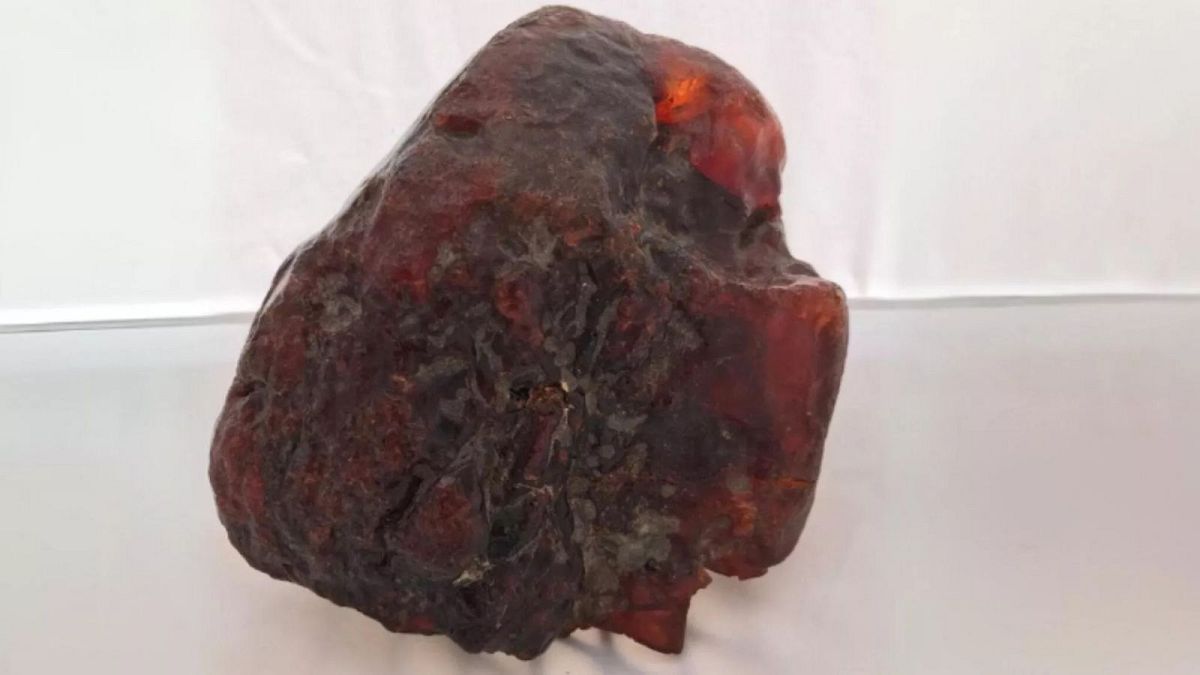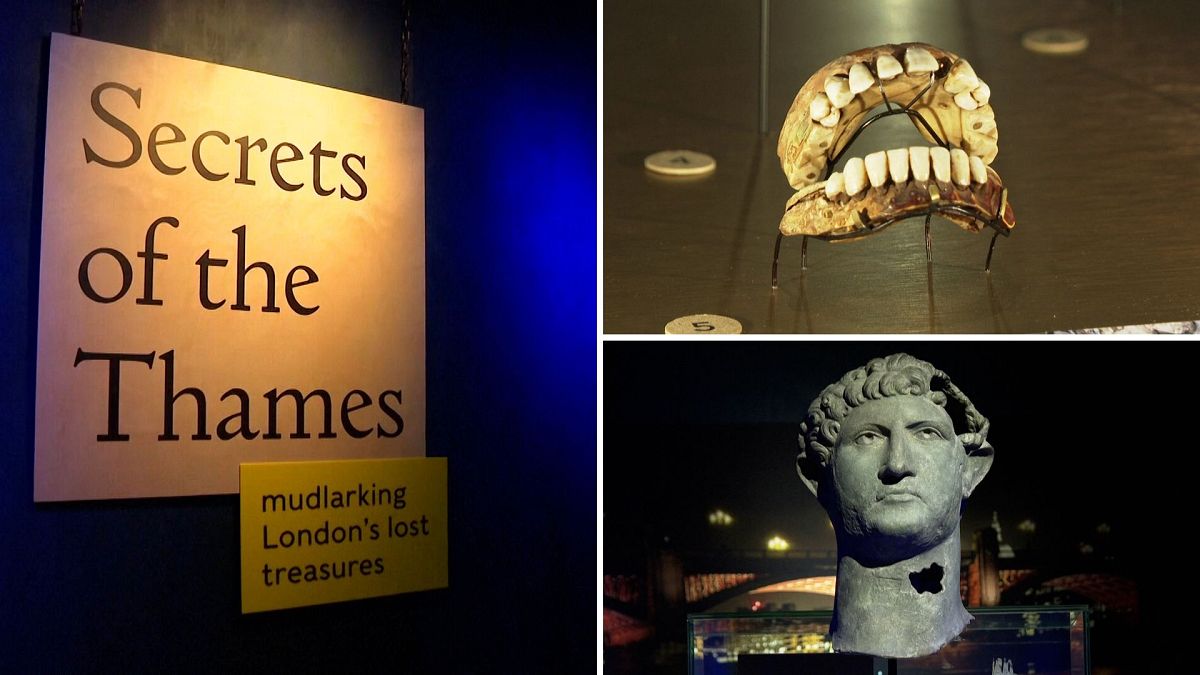As the first George Smiley novel is released by Nick Harkaway since his father John le Carré's death, we look at the other historic father-son literary partnerships.
This week, George Smiley came back in from the cold, as the beloved fictional spy character from author John le Carré returned to bookshelves, this time written by his son.
George Smiley featured in nine le Carré novels, starting with "Call for the Dead" in 1961 through to "A Legacy of Spies" in 2017.
This week, a new Smiley novel has been released, this time by le Carré’s son Nick Harkaway. Le Carré died in 2020, aged 89. "Karla’s Choice" takes place between the events of "The Spy Who Came in from the Cold" (1963) and "Tinker Tailor Soldier Spy" (1974).
In 2021, Le Carré’s final novel "Silverview" was published posthumously with retouching work done by Harkaway, however this was not part of his Smiley storyline.
Le Carré, real name David John Moore Cornwell, became an MI5 officer in 1958 before transferring to MI6 in 1960. He continued to work in the British intelligence services until 1965 when his cover was blown as part of the betrayal by the double agents known as the Cambridge Five.
From his years in the secret services, le Carré imbued his Smiley novels with a sense of realism and grit that elevated his protagonist as one of the greatest spy characters, alongside Ian Fleming’s James Bond.
Smiley has been portrayed multiple times in film and TV, including Alec Guinness, Simon Russell Beale, and Gary Oldman’s Oscar-nominated version for 2011’s Tinker Tailor Soldier Spy.
"Karla’s Choice" has already been praised for continuing le Carré’s legacy and quality, as Harkaway joins an impressive list of children who have taken up the gauntlet of their parent’s fictional universe.
Here are some of the other most notable examples.
Dune – Frank and Brian Herbert
Between 1963 and 1985, Frank Herbert released his six "Dune" novels. From the first one, he changed the world of sci-fi forever. His comprehensive approach to creating the fictional "Dune" universe, spanning from modern day Earth through to over 20,000 years in the future, encapsulated readers and inspired more than a few others. Looking at you George Lucas.
The universe that Herbert created was rich enough in detail to inspire the visual worldbuilding that underpinned Denis Villeneuve’s recent film adaptations. It even stretched further into the future with the following five novels as dynasties rise and fall across Arrakis.
But when Hebert died in 1986, aged 65, he left behind outlines and notes for where the story would go in a seventh novel to follow "Chapterhouse: Dune". Working alongside sci-fi author Kevin J. Anderson, Herbert’s son Brian Herbert took on the daunting prospect.
Before they did that, Brian and Anderson worked on three prequel novels, giving backstory on the three great family houses of Dune, then three more historical prequels of the universe, before finally producing Herbert’s seventh novel in two parts, "Hunters of Dune" and "Sandworms of Dune" in 2006 and 2007. The pair continue to work on the universe and have written 17 novels.
The Lord of the Rings – JRR and Christopher Tolkien
JRR Tolkien is the undisputed grandfather of the modern fantasy novel. After his time in the First World War, he became a literature and languages professor, where he gained his obsession with creating fantasy languages.
It was through this fascination that Tolkien first began creating his fictional world of Middle-earth. In his life, Tolkien's first full publication based in his world was "The Hobbit", a children’s book that riffed off his growing legendarium of Middle-earth released in 1937.
Tolkien followed the surprise success of "The Hobbit" with his iconic "The Lord of the Rings" trilogy, released from 1954 to 1955. Although Tolkien spent the rest of his life writing extensively, the only things he would publish after the trilogy in the Middle-earth universe was two volumes of poetry.
Tolkien died in 1971 having appointed his son Christopher as his literary executor. Christopher has since taken the extensive notes and unpublished works that Tolkien worked on in his life to create an extensive posthumous Middle-earth bibliography.
The most significant works that Christopher has helped his father complete posthumously includes "The Silmarillion", which was released in 1977 and details the history of Middle-earth thousands of years before the story of "The Lord of the Rings". Tolkien originally wrote it as the novel he wanted released after "The Hobbit", but changed course to the eventual trilogy when "The Silmarillion" was rejected.
Mr. Men and Little Miss – Roger and Adam Hargreaves
Originally created by British writer Roger Hargreaves in 1971 with "Mr. Tickle", inspired by his son Adam. Between 1971 and 1988, Roger wrote and illustrated the series, adding the Little Miss series from 1981.
“It all started with a tickle. Roger Hargreaves’ son Adam asked him what a tickle looked like. In response, Roger drew a small orange man with extraordinarily long arms that could reach anywhere and tickle anyone. Mr. Tickle was born and Mr. Greedy, Mr. Happy, Mr. Nosey, Mr. Sneeze and Mr. Bump soon followed. The books were an instant hit and Roger went on to create many more Mr. Men and Little Miss characters which have been delighting children and adults for generations,” the publisher HarperCollins has said.
After his death in 1988, his son Adam took over writing and illustrating duties. There are over 90 Mr. Men and Little Miss characters in the range of popular books which have sold over 250 million copies in 17 languages.

 5 months ago
61
5 months ago
61






 We deliver critical software at unparalleled value and speed to help your business thrive
We deliver critical software at unparalleled value and speed to help your business thrive






 English (US) ·
English (US) ·